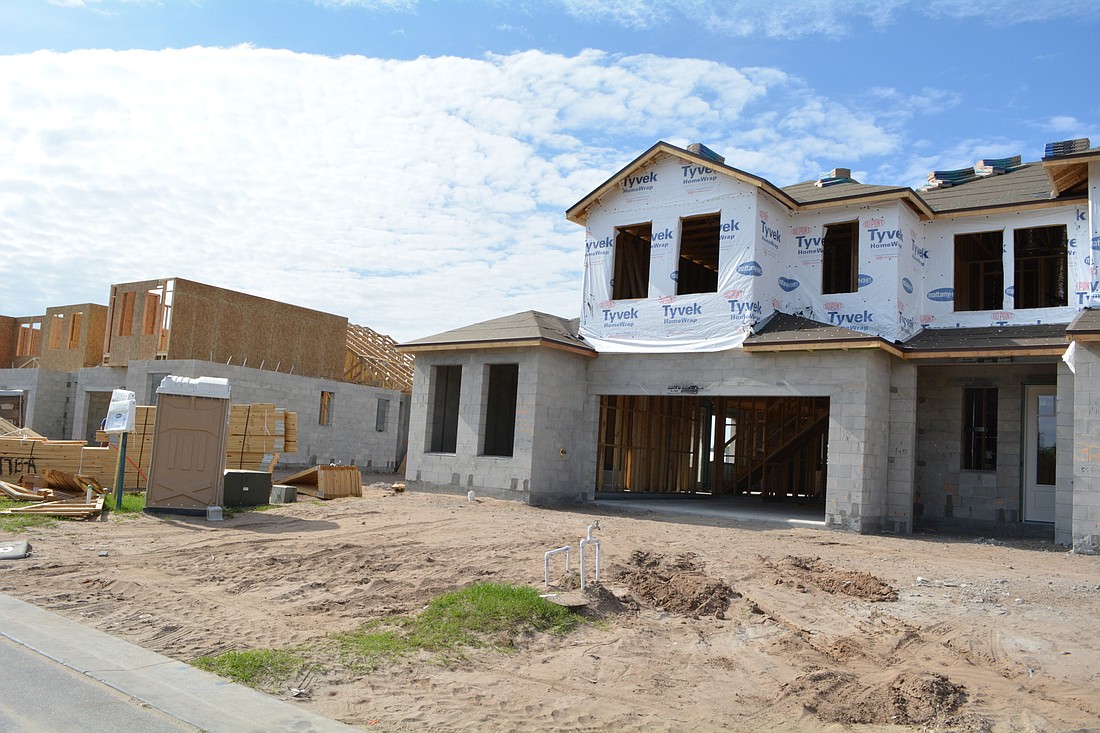- April 18, 2024
-
-
Loading

Loading

Retired fireman Leigh Hollins has lived in Manatee County for 41 years and hopes to build a home farther east to escape from the “metropolis” enclosing his Mill Creek home.
But the cost of doing so is rising.
Hollins said he will have to pay more than $12,000 in total impact fees to build a 1,600-square-foot house on 8 acres in the Winding Creek subdivision in easternmost Manatee County. That figure includes the current $6,057 Manatee County impact fee, which could be about to rise.
Impact fees are one-time fees assessed on new development in unincorporated Manatee County to address the development’s impact on infrastructure and services. The money goes toward public safety, law enforcement, transportation, parks and libraries. (See chart, right).
“When I built my house (in Mill Creek) in 1991, the impact fees were $2,000 and it was based on the number of bedrooms it had. Now it’s based on square footage,” Hollins said. “It’s out of control.”
Others argue the fees aren’t high enough and new construction should pay more to mitigate impacts on infrastructure and county services. A 2015 impact fee study recommended a maximum amount that could and should be collected.
River Place’s Al Horrigan said those additional dollars are needed to complete projects such as the extension of Lena Road, for example, or fund the completion of the 44th Avenue East extension toward Lakewood Ranch.
“There is nothing inconsistent with being pro-growth and insisting that those who profit from growth pay for its impacts,” Horrigan said. “To fail in our duty to insist that development pay for its impacts is a dereliction of our duties.”
Manatee County commissioners on March 1 discussed whether the county should maintain impact fee rates at a 90% level of an amount recommended by a 2015 Tischler-Bise impact fee recommendation, or to increase them to the 100% allowable rate as previously planned. Currently, the fees are slated to increase to 100% on April 18, but the board will decide whether to maintain the 90% level at its March 20 meeting.
In the East County area, the difference between 90% and 100% ranges from $316 to $1,055 depending on home size. For an 1,800-square-foot home, for example, the rate would increase by $847, to $8,463. That fee does not include the School District’s impact fee or other costs for permitting other building-related services.
Manatee County Planning Official John Osborne said the difference between the 90% and 100% levels for Manatee County impact fees equates to about $2 million annually, based on current growth projections — about 2,000 homes countywide per year.
He said collecting less money does not necessarily mean the county will not be able to build new roads. Instead, it means the roads may have narrower travel lanes or other modifications to stay within budgetary constraints.
“We live within our means,” Osborne said. “Instead of having the ideal 120-foot roadway, we might have tighter travel lanes.”
Commission Chairwoman Priscilla Whisenant Trace and Commissioner Robin DiSabatino said they believe the fees should go up.
“Two million (dollars) a year might be crumbs (to some people) but compound that over a few years and it adds up,” DiSabatino said.